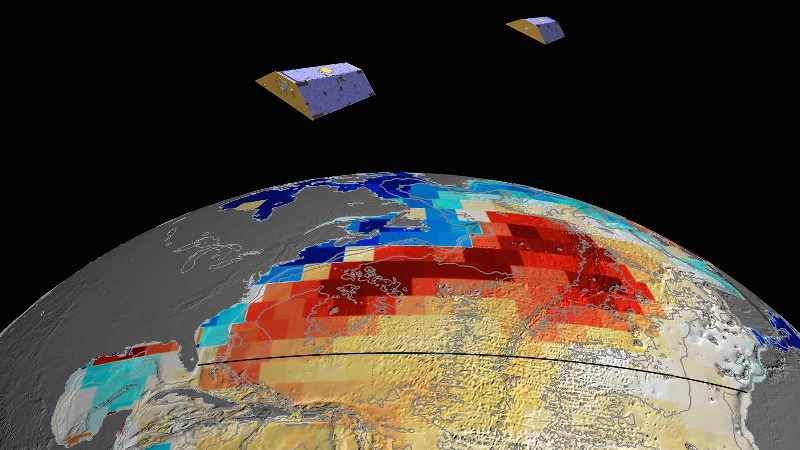
The cold "blob" that developed off Greenland may be the drag on the Atlantic Meridional Overturning Circulation (AMOC) by producing very chilly to record cold water, the National Oceanic and Atmospheric Administration said earlier this year.
Global warming may be responsible for AMOC's slowdown but natural forces may also be at work, NASA said. AMOC is part of the complex circulation of currents that help take the warmer Gulf Stream water and move it through the basin.
Data from the Gravity Recovery and Climate Experiment (GRACE) satellites correspond with similar findings that were not satellite-based. The GRACE findings were published in the journal Geophysical Research Letters.
An AMOC slowdown would impact other currents throughout the Atlantic.
"If the Gulf Stream and correspondingly other currents in the Atlantic weaken, then it could change long-term temperature patterns all around the Atlantic basin," AccuWeather Chief Meteorologist Elliot Abrams said.
That may make temperatures cooler in cities such as London, Amsterdam, Paris and Lisbon instead of being part of a global warming trend.
The glacier Zachariae Isstrom in northeastern Greenland that holds enough water to raise global sea levels by more than 18 inches has come unmoored and is crumbling into the North Atlantic Ocean, according to an international group of researchers. It is losing mass at a rate of 5 billion tons per year, according to findings published in the journal Science.
Buoy data from the winter of 2009-10 estimated a similar slowdown, but it's the first look at the circulation from space, which also showed the slowdown extending several thousand miles north and south of the buoy's latitude of 26 degrees North, NASA said.



Comment: As the global warming hoax spirals out of control, evidence suggests that the world is on the brink of a new ice age. See also: